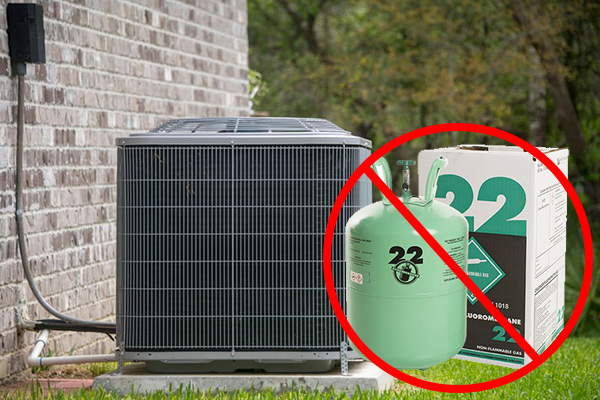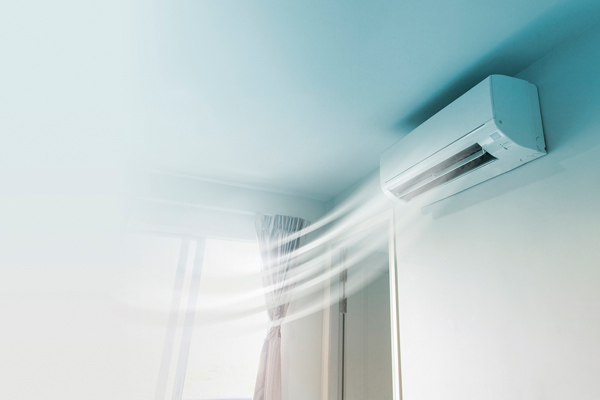The Biggest Changes In HVAC Technology Over The Last 10 Years

The best solutions to our problems have mainly been due to human ingenuity. We as a species are adaptable, capable of surviving any environment, regardless of its conditions. This ingenuity is still useful to us today. Our ability to develop technology has allowed us to enjoy better comfort and safety. One of the industries that have benefited from technology is the heating and cooling field. It has enjoyed a number of innovations over the last few decades. In the past, for example, people needed wood to burn for heat. These days, we merely have to press a few buttons to keep our homes comfortable. HVAC technology has indeed made quite a difference in the way we enjoy our lives and consume energy.
Changes In Heating and Cooling Technology
Contents
In this article, we discuss some of the innovations that have taken place in the HVAC industry.
1. Better HVAC Efficiency
Many homes did not enjoy the benefits of HVAC technology in the past because HVAC equipment was associated with massive costs. The equipment was not only expensive but using them meant consuming more energy. This was especially true when the equipment was turned on for long periods. It didn’t help that HVAC systems were bulky and required a lot of area for installation.
Thanks to technology, modern HVAC systems are far more efficient and reliable. They consume less energy to keep indoor spaces comfortable. Homeowners then enjoy lower energy bills that save them a good amount of money. Energy-efficient furnaces require less fuel to keep a home warm during the cold months. Because of the lower environmental impact, HVAC equipment that uses energy-efficient technology is a popular choice among environmentally-friendly consumers.
2. Phase-Out Of R-22 Refrigerant

Refrigerants or coolants are essential for the cooling mechanisms of every air conditioning system. Unfortunately, older coolant types were proven to be harmful to the environment, especially the ozone layer. The ozone layer absorbs ultraviolet radiation from the sun. With its depletion, the risks associated with UV radiation increase. These risks include the development of cataracts and skin cancer. This also has negative effects on plant and marine life.
As a result, air conditioner manufacturers have begun moving away from the use of formulations that have a serious ecological impact. Beginning in 2010, the government has imposed a ban on the use of the R22 refrigerant on cooling equipment, except for existing units. The year 2020 saw the total ban of the refrigerant, which means that older AC systems would have to be retrofitted or replaced. New systems work with more environmentally-friendly coolants such as R-410a.
3. HVAC Systems Using Smart Technologies
Tech companies have always spearheaded technology to develop smart homes and introduce better means to improve comfort and convenience. These technologies have helped in the production of smart appliances that can be connected via the Internet and simply accessed using laptops and smartphones. Homeowners simply have to check the status of their appliances using their personal gadgets. What’s great about this setup is that it also allows for remote control of the appliances. If you are away from home, for example, and realized that you had not turned off the A/C, you can log onto your smart device and turn it off so it does not consume energy unnecessarily. You can also maximize the use of your HVAC system by turning it on for a few minutes before you arrive home. That way, you come home to a comfortable house.
4. Ductless HVAC Systems

Many homes still rely on HVAC systems that still use ductwork to distribute conditioned air throughout the home or building. Unfortunately, ductwork is not always practical. Older homes, for example, were usually built without ducts. To accommodate central air conditioning, homeowners may have to pay for massive renovation work. A good way to get around this problem is to use ductless systems. Ductless or mini-split systems, sometimes called ductless heat pumps, are a more practical choice. A ductless system consists of one outdoor unit and 1-8 indoor units to heat or cool a home. Ductless heat pumps are also effective for providing heat during winter. Ductless systems also feature better system efficiency, noise reduction, improved indoor air quality, and convenient temperature control.
5. HVAC Zoning Systems
Larger homes used to be difficult (and costly) to heat or cool. But with modern technology, this is no longer the case. Today’s HVAC systems work extremely well with large buildings – the type of structure that standard HVAC systems cannot efficiently heat or cool. With zoning, there are different thermostats installed in each room or zone so temperatures in those areas can be controlled independently. If preferred, dampers can also be installed on the air ducts. These modifications can help increase comfort without increasing cost and energy consumption.
6. Sensor-Driven Ventilation
Most of the time, ventilation takes a backseat but is actually as important to achieving comfort. Smart ventilation systems are fairly new, introduced only in 2016. They allow monitoring of airflow in each vent in the home. This is quite helpful for identifying vents that have blockages so any obstructions may be removed. This type of technology allows users to turn the vents off in unoccupied rooms, hence reducing energy consumption significantly. It is even possible to automate certain tasks, using sensor data for reference.
7. Variable-Speed Compressors

Today’s air conditioners come equipped with variable-speed compressors. This feature translates to reduced noise, better temperature management, improved humidity control, and enhanced energy efficiency. It allows you to control your HVAC system so it can easily adapt to changes in the environment. A variable-speed compressor can adjust to the load, slowing down when the load is light. It can then speed up the HVAC system when there is more demand. Plus, this feature protects the system from starting surges, ensuring that the quality of the power supply is enhanced. Variable-speed compressors also last longer, ensuring that the HVAC system is energy-efficient.
Conclusion
Technological progress has escalated throughout the years. It has resulted in exciting innovations that have made our lives that much more convenient and interesting. After all, technological progress occurs mainly to make life better and solve problems. If your current HVAC system is at least 10 years old, you should consider a replacement to enjoy improved performance and better comfort. This is especially relevant if your HVAC system is already showing signs of age or wear-and-tear, or worst has broken down multiple times in the last couple of years. By replacing an older system completely, you will be able to avoid costly HVAC repairs, reduce monthly bills, save money, and enjoy enhanced comfort.
Call Lawes Company For Superior Heating & Cooling Solutions

Lawes Company is the top provider of HVAC services in Monmouth and Ocean County, New Jersey. Every project we do is performed only by HVAC certified technicians, so you know that the service you are receiving is the best in the industry. From heating and cooling tune-ups and installations to HVAC repairs and replacements, we only provide the most competitive services that meet your comfort and budget needs. If you are ready to make technology work for you, call Lawes Company today and make your appointment for a free, in-home estimate.
Contact us now at (732) 741-6300 to find out more!